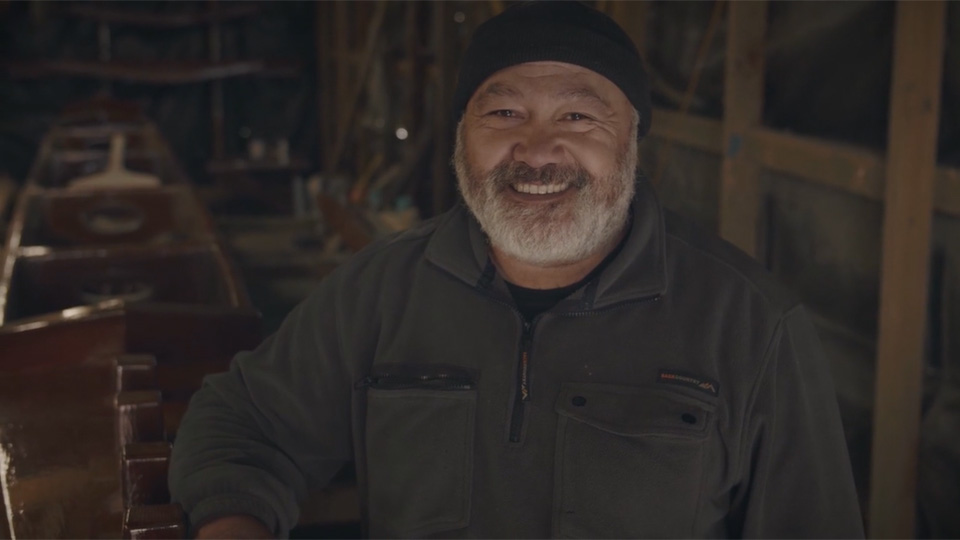A Va’a represents a purpose built for wellbeing
John Misky was six years old when he and his family left the islands of Tokelau for a new life in Aotearoa. Adapting to a new life and learning a new language in New Zealand brought its challenges. But his connection to the sea inspired him to pursue a life of building and sailing va’a to keep alive the voyages of our Pacific ancestors which span over centuries.

The earliest recollection John Misky has of his love of the ocean was the sounds of men, young and old, chipping away with adzes at a block of wood, with friends and family, enjoying the laughter and camaraderie that surrounded him.
“I remember sailing wooden va’a with Dad when I was a little kid,” he recalls.
“I treasured those special moments and dreamed of following in the footsteps of our voyaging ancestors.”
A voyaging society was being developed in Samoa and John came to Auckland for one of their first meetings in 2008. In 2009 they returned to Auckland which led to the formation of the Voyaging Meeting Society for the Pacific. Through that he gained the opportunity to sail around the Pacific on the vaka Te Moana from 2010-12, which was where he learnt to sail.
“I’d been working on it as a promise I had made to my grandma back in 2003 when she was still alive. Sadly, she passed away in 2005, but I was still determined to finish it to fulfil my promise to complete it for her. We tried again in 2014 and 2016 and I was about to give up. But I gave it one more go when we went to our Minister to bless the project.
“He did so, which was fitting in that it made me realise that, as individuals, we can’t build things by ourselves in isolation,” John adds.
“It’s not just about the men. It’s the women who weave the sail which is about working in partnership. The sail itself represents the propulsion of the va'a going forward when it catches the wind. Safety remains paramount. This has been built for everyone. It’s a matter of how we move forward and continue to share the knowledge, which represents our cultures, languages, traditions, knowledge and family connections.”
These principles align and support Pasefika Proud strengths-based vision as anchors of identity to keep peace, harmony and wellbeing for our family connections where safety is paramount.
Pasefika Proud Principles
The following principles support and guide our work:
Community-led – supporting communities to identify their own needs, and design and lead their own solutions. Community leadership happens at all levels – including in homes, churches and sport and cultural settings. Pasefika Proud taps into and nurtures those community leaders, influencers and role models who are able to inspire and support positive change.
Strengths based – drawing on Pacific cultural values to strengthen communities, build resilience and keep Pacific peoples safe. Focusing on assets and dispelling the myth that family violence is part of our various Pacific cultures. This helps to open doors that would otherwise be closed to conversations about family violence.
‘Ethnic-specific for Pacific’ – working intentionally in an ethnic-specific way to support the development of community-owned, culturally appropriate solutions. Experience and evidence to date suggest that a ‘one size fits all’ approach is not as effective as one that derives from unique cultural frameworks and strengths.
Diversity / Inclusion – recognising that Pacific peoples in New Zealand are incredibly diverse in terms of culture, ethnicity, migration experience, age, gender, location and many other factors. Acknowledging and understanding our diversity helps us to be more inclusive.
Evidence based – building expertise and an evidence base on what supports positive change / transformation that prevents violence within Pacific families and communities.
Education / Skills focused – supporting knowledge and skills acquisition that builds confidence and capability within Pacific families, communities and services.
Sustainability – acknowledging the complexities and intergenerational impacts of family violence, and focusing on realistic solutions that help to embed and sustain social change at the community level.